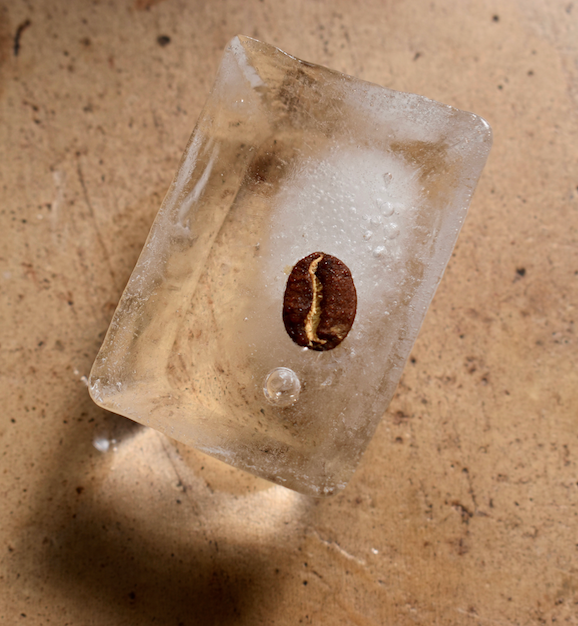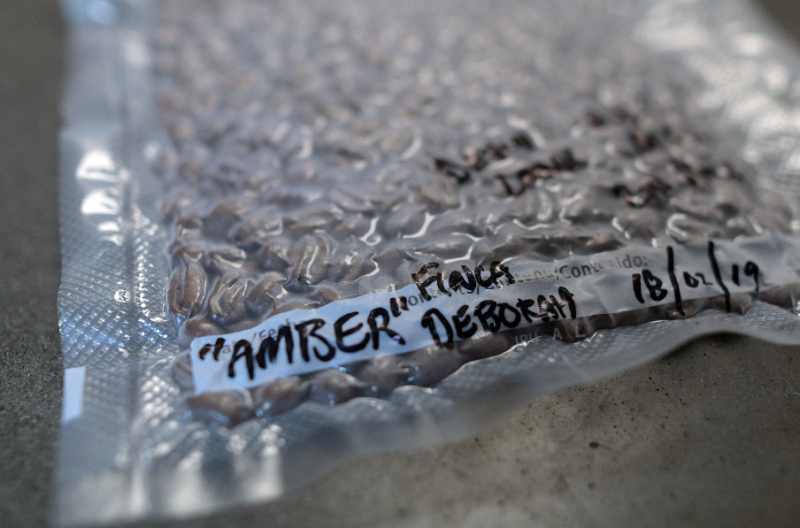As you will read below, freezing coffee is in vogue with coffee professionals around the world. Freezing roasted coffee beans is a practice that often divides the coffee community. For some, it’s about enhancing flavour while for others it’s about playing with controversies. But whatever the cause, it is clear that freezing beans is gaining momentum, especially as a way to reduce coffee wastage. So perhaps you can try this home! And I think we can all agree, these are pretty desperate times and one cannot run out of coffee.
Tips when Freezing Coffee at Home

Words by Anastasia Prikhodko
Matthew Lewin, Australia’s ACT State Wholesale Manager for ONA Coffee, has been experimenting with freezing coffee since 2017. “[We] not only freeze for flavour but also for preservation,” he says. “We wanted to lock a coffee’s flavour in time and found that freezing at an ultra-low temperature keeps the coffee tasting just as good even six months later.” Lewin and the ONA research development team believe freezing coffee is one of the best applications to control the coffee flavour and achieve consistency.
“Freezing halts coffee from ageing, it’s a one-stop solution for maintaining and enjoying coffee at its absolute best,” he says. “I’d roast less often, freeze more, and enjoy the coffee in its exact perfect peak window. This way, it can be prepared and enjoyed consistently and with more control, more often.”
Frozen coffee has become a staple at ONA, with their Sydney store serving up to 55 varieties of frozen beans on the menu. Breaking the classic stale coffee restriction inherent in coffee and having the opportunity to enjoy ‘aged’ coffee. Lewin says, “Imagine coffee vintages being tasted years down the track; it’s a very cool future for drinking coffee.”
Throughout ONA’s experimentations, the team has come across several unsuccessful applications for freezing coffee. “We’ve seen that bulk freezing doesn’t work. For example, freezing a 1kg of roasted beans then using it bit by bit from an open bag or vessel, which means opening and closing repeatedly.”
It is best to freeze the beans in individual doses and use/grind them immediately out of the freezer to achieve repeatable and high-quality results. “Negative pressure packaging environments (vacuum sealed) is the best approach we’ve found,” Lewin says. Additionally, freezing beans and grinding them while frozen alters the beans’ particle size, shape and distribution profile. “This means we can extract more of the coffee, giving clearer flavours, more refined sweetness - overall lifting the clarity of the cup,” he says.

As this method continues to be tried and tested, it is interesting to note why the industry is even looking at freezing coffee. To which Lewin says, it provides a solution to the degrading staling element inherent to any coffee, along with providing additional levels of control and consistency.
Another topic that seems to be on the forefront is how freezing beans can help reduce wastage. Lewin responds with, “Wastage is a component relevant to the consumption component of the supply chain.”
Research from World Coffee Research (WCR) has indicated that current and future prospective evaluation of global consumption is outweighing production for a myriad of mitigating circumstances. WCR has suggested that the coffee industry will experience a shortfall of 182 million bags of coffee by 2050 due to rising demand of about 1.5 per cent to 2 per cent a year. Research has also shown that if nothing is done, more than half of the world’s coffee land will become unsuitable because of climate change.
“In the future, we won’t be able to supply demand,” Lewin says. “If we half the amount of coffee we use in existing consumption levels, we can have a better chance to manage the production issue.”
The industry standard is to use 20g of coffee for a double espresso, but a double espresso can also be made using 10g of coffee. Lewin explains that by adjusting the roasting and brewing together with lower coffee machine pressure and flow control, we can create the same experience with half the coffee. “Rethinking consumption habits have the potential to provide a big amount of support to this growing issue.”
The coffee beans will continue to age in the freezer, but at a slower pace. It is estimated that around 250 days in the freezer equates to one day of ageing in the bag unfrozen at room temperature. Despite the movement towards this new phenomenon, the industry remains critical. “The tough thing about coffee is that the variables and often non-conclusive evidence are used to present an idea as fact. Freezing is controversial because, for a long time, the coffee community actively advised against it,” explains Maxwell Colonna-Dashwood, founder of UK’s Colonna Coffee. “It’s also not practical commercially in coffee shops and roasteries.”
To answer the question of why freezing is growing across the industry, Colonna-Dashwood says:
“It offers benefits in terms of quality, primarily the ability to maintain a flavour profile of a coffee over long periods. I think the freezing of green and roasted coffee has a big impact that can make coffee similar to wine with harvests having a life beyond the typical 8-12 months.”
Colonna-Dashwood also agrees that frozen coffee displays more clarity and aromatics.
“The more aromatic the coffee, the bigger the difference, such as a Geisha,” he says. “My current thinking is that grinding coffee is damaging, and freezing helps not to damage the flavour.”
Colonna-Dashwood is particularly interested in the phenomenon of the espresso pour changing during the day. “There has been speculation for a long time about what causes this. Could it be the machine changing with use during the day? The motor performance? The air temperature?” he asks. “We quickly realised the bean temperature itself had a big impact, and we then began to explore grinding coffee at varying temperatures.”
Colonna-Dashwood conducted the research together with Christopher Hendon, which showed that the most significant change in particle distribution happens between + and - 20 degrees celcius.
“As baristas and coffee professionals began experimenting with frozen grinding, there also appeared to be benefits in aromatics of the brewed coffee,” he says. “The theory is that the volatile aromatics are preserved while the beans are frozen, and that heat damages the grind.”
He says each coffee package needs to be stored individually without oxygen and moisture. “Cold grinding seems to have a growing following of supporters, even then it seems to produce a crisp clean but lighter bodied coffee, again, it is subjective.”
Colonna-Dashwood also agrees with the conversation of freezing coffee as a way to help coffee farmers facing climate change and a way of reducing wastage. He says the propensity for green coffee to deteriorate over several months post-harvest creates many issues.
“This is an obstacle for farmers, exporters, importers, and roasters, with stock that loses quality and therefore value,” he says. “Again, it could help coffee become more wine-like and help to price well.” Alternatively, Colonna-Dashwood says storing green coffee not only costs money, but it also means sitting on stock and not making money from that stock.
“You would have to be in a decent financial position as a farmer to be able to sit on the stock rather than try and sell it as soon as possible,” he says. “Same goes for green merchants and roasteries; all this hurts cash flow and increases stock holding.”
The type of impact freezing coffee can have on the industry remains a topic of debate. Mike Chapman of 1914 Coffee in Squamish, Canada began his experimentations after reading an article by Michael Cameron in 2015. Chapman has been serving a frozen coffee menu for several years, as well as collecting a vintage freezer menu.
He says the industry is also looking at freezing methods because it would help with the preservation of high-end coffees, and it’s a way of mitigating unnecessary wastage. However, he prefers to avoid the conversations of whether freezing coffee is beneficial or not, by steering the dialogue to coffee quality and wastage. Chapman says, although he clarifies that this is him speculating:
"All coffee moved from origin carries a carbon footprint, so if more of the coffee that is moved is used up completely then we can order a small percentage less coffee annually, meaning less carbon emission."
It seems freezing is just another tool for dealing with the ever-changing organic product of coffee. For those wanting to freeze at home, Chapman says to be prepared to sacrifice freezer space or accept that you are going to have a dedicated coffee freezer.